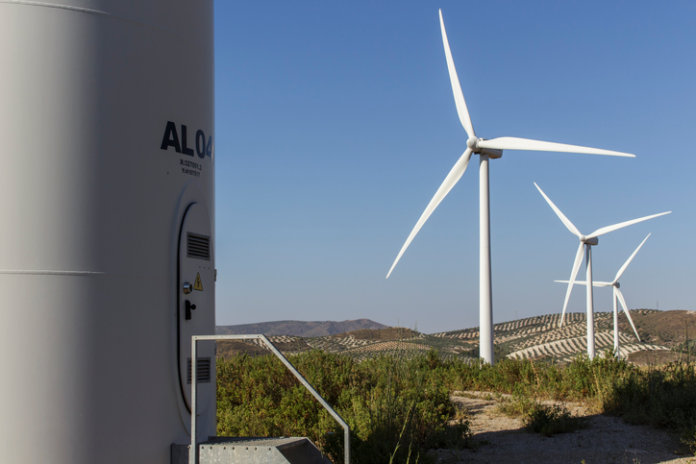Because of underperformance and downtime, the current U.S. wind fleet could produce an estimated 12 TWh more energy than it currently does, according to new findings from Uptake, a Chicago-based analytics software company.
This number represents enough untapped energy to power roughly 1.1 million homes – equal to nearly all the homes in the city of Chicago, says Uptake.
“Current wind turbines can produce much more energy than they do today,” explains Sonny Garg, global energy solutions lead for Uptake. “With the ability to predict problems before they happen, the potential increase in wind turbine energy production is massive and important to our transition to a clean energy future.”
Today, the U.S. wind fleet’s availability – the measure of a wind turbine’s readiness to produce energy – is 94%, but 99% availability is possible, according to the report. For each 1% gain in availability, an estimated additional 2.4 TWh of wind energy would be produced by the current fleet without new hardware or turbines. (Uptake notes its findings are based on 2016 government and industry data.)
According to the findings, each 1% increase would do as follows:
- Increase energy production by the equivalent of adding 450 additional wind turbines without building new generation;
- Produce nearly the same amount of electricity as one coal-fired power plant;
- Reduce CO2 emissions by 1.78 million metric tons, the equivalent of removing more than 382,000 cars from the road every year; and
- Power 222,000 additional homes annually.
So, what contributes to today’s downtime and inefficiencies? According to Uptake, problems include as follows:
- Reactive maintenance to unforeseen problems;
- Operations information not available in one single, real-time view;
- Inspections based on time, not component condition;
- Challenges managing accurate/adequate parts inventory; and
- Unknown underperformance of turbine components, including poor pitch and yaw alignments and defects with anemometers.
Uptake’s report outlines how software technologies that optimize operations, identify component breakdowns before they happen and provide real-time information on turbine performance can dramatically increase the amount of energy produced by wind fleets.
Specifically, the report claims, predictive analytics and visibility software that optimizes operations can do as follows:
- Provide real-time turbine status;
- Create insights that forecast problems before they happen;
- Allow technicians to perform proactive maintenance;
- Enable more effective maintenance scheduling based on forecasted failures, weather and power prices;
- Optimize production with better pitch and yaw alignment; and
- Automatically manage parts inventory.
“The findings from Uptake’s report underscore a huge opportunity for the current wind fleet to produce more energy,” says Dr. Sue Tierney, senior advisor at Uptake’s analysis group and advisor and former assistant policy secretary at the U.S. Department of Energy. “If the wind power industry uses data to improve operations and stop problems before they start, it will be better positioned to stay competitive in today’s evolving energy markets.”
Uptake’s full report can be found here.




